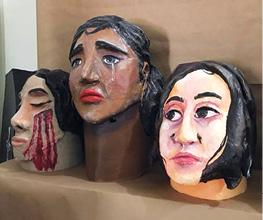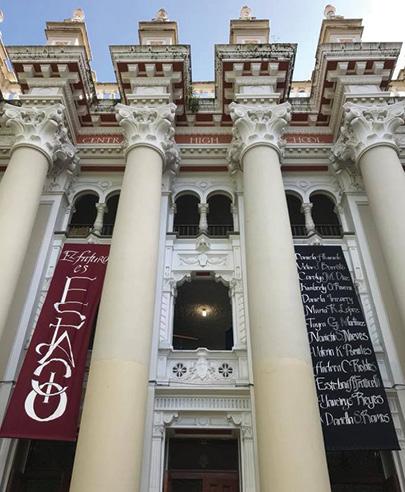Last May, the AFT’s executive council held its spring meeting in Puerto Rico. It was nearly eight months after Hurricane Maria had devastated the island. In the wake of the storm, the AFT joined in numerous recovery efforts. Among the most notable was Operation Agua, which the AFT launched to ensure families could have access to safe drinking water. Through this effort, the AFT raised more than $2 million to distribute more than 100,000 filters to residents and public schools all across the island. The AFT also sent professional staff to support the Asociación de Maestros de Puerto Rico (AMPR), whose members were severely impacted by the storm. Just weeks before Maria hit the island, AMPR had voted to affiliate with the AFT.
To show solidarity with the local and its members, the executive council held its meeting in San Juan. Members of the council met with teachers and students and observed the rebuilding efforts. They also toured the Escuela Especializada Central de Artes Visuales in San Juan. The school, which enrolls students in grades 7–12, boasts a thriving visual arts program. Members of the council toured La Central (as the school is commonly known) to see firsthand the damage the historic building had suffered. But a highlight of the visit was seeing the students’ beautiful works of art. On the following pages, we show some of these pieces and hear from veteran teacher Eluciano Vega González. For 23 years, Vega has taught art at the school. Here he reflects on its importance in students’ lives.
–Editors
Art education in this school is integrated into other subjects, which means there are connections with the academic classes. For example, students use mathematics in determining the proportions of works of art and in making the frames for their pieces. Also, they integrate history into art. They need to know the history of the art they’re making. What is the artistic tradition, the trajectory? Is it European, American, South American, Central American, or Caribbean? And art classes are connected to Spanish language classes, since students write about what they create.
Of course, there is an emotional side to art. It helps students to channel emotions. For example, in a course on fresco paintings, they select a topic that reflects who they are, what they feel, what they suffer, and what they experience in their surroundings. Some students become interested in studying psychology through art. We have students who are very vulnerable to the difficult situation on the island and use art to project and reflect the feelings they have—not only their feelings but the feelings of their peers, because after what happened with Maria, some left.
Although I would love my students to become great artists, I think the greatest lesson I can teach them is to be great human beings. If art can help students to be good neighbors and great human beings, that would make me happy, because that lesson will then be with them their whole lives.





